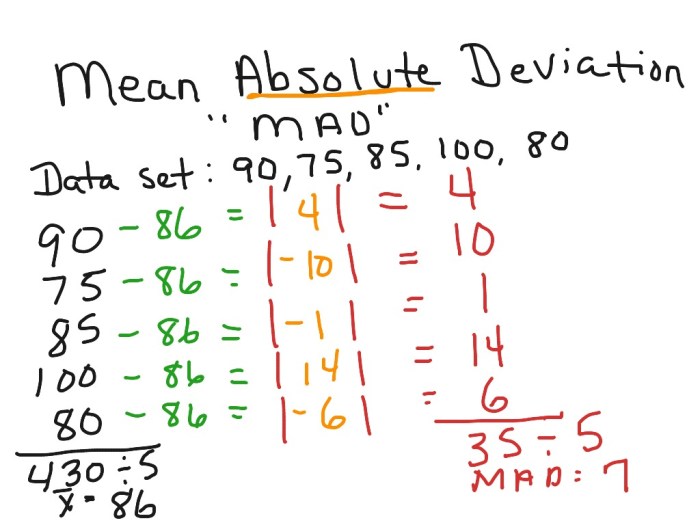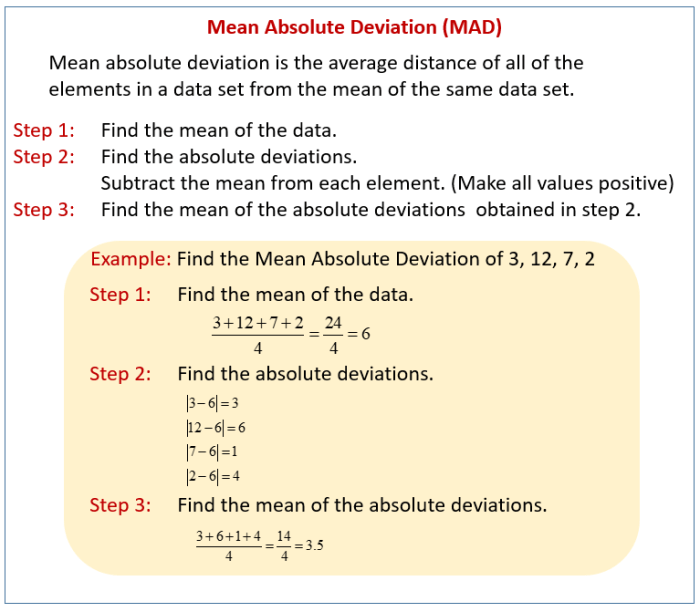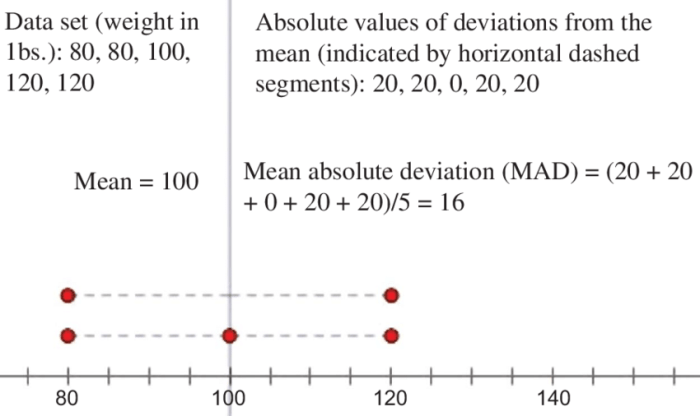Embarking on a journey to unravel the intricacies of mean absolute deviation (MAD), this guide presents the Mean Absolute Deviation Part 1 Answer Key, an indispensable resource for comprehending this fundamental measure of central tendency. Delving into real-world applications and practical examples, this key unlocks the secrets of MAD, empowering you to decipher data patterns and make informed decisions.
Through a meticulous exploration of the MAD formula, step-by-step calculations, and insightful interpretations, this key equips you with the tools to navigate the complexities of data analysis. Discover the strengths and limitations of MAD, contrasting it with other measures of central tendency and highlighting its unique advantages.
1. Mean Absolute Deviation (MAD) Overview: Mean Absolute Deviation Part 1 Answer Key

Mean Absolute Deviation (MAD) adalah ukuran tendensi sentral yang mengukur penyebaran data dengan menghitung jarak absolut rata-rata antara setiap titik data dan nilai tengahnya. MAD memberikan indikasi variabilitas data dan sensitif terhadap outlier, menjadikannya ukuran yang berguna untuk data yang miring atau memiliki nilai ekstrem.
Aplikasi MAD
- Mengidentifikasi outlier dan mendeteksi kesalahan data
- Membandingkan variabilitas antar dataset yang berbeda
- Menilai kinerja model prediktif
- Menyesuaikan model distribusi data
2. Calculating MAD

Rumus untuk menghitung MAD adalah:
MAD = (1/n)
- ∑i=1n|X i
- M|
di mana:
- X iadalah titik data ke-i
- M adalah nilai tengah (mean) dataset
- n adalah jumlah titik data
Langkah-langkah Menghitung MAD:, Mean absolute deviation part 1 answer key
- Hitung nilai tengah (mean) dataset.
- Untuk setiap titik data, hitung selisih absolutnya dari nilai tengah.
- Jumlahkan semua selisih absolut.
- Bagikan jumlah tersebut dengan jumlah titik data.
Contoh:
Diberikan dataset: 2, 4, 6, 8, 10
1. Nilai tengah (mean) = (2 + 4 + 6 + 8 + 10) / 5 = 6
2. Selisih absolut: |2 – 6| = 4, |4 – 6| = 2, |6 – 6| = 0, |8 – 6| = 2, |10 – 6| = 4
3. Jumlah selisih absolut = 4 + 2 + 0 + 2 + 4 = 12
4. MAD = (1/5) – 12 = 2,4
Helpful Answers
What is the formula for calculating MAD?
MAD = Σ|x – x̄|/n, where x is each data point, x̄ is the mean, and n is the number of data points.
How does MAD differ from mean and median?
MAD measures the average absolute distance from the mean, while mean represents the sum of all data points divided by the number of points, and median is the middle value when data is arranged in order.
What are the advantages of using MAD?
MAD is less affected by outliers than mean and is a more robust measure of central tendency for skewed distributions.

